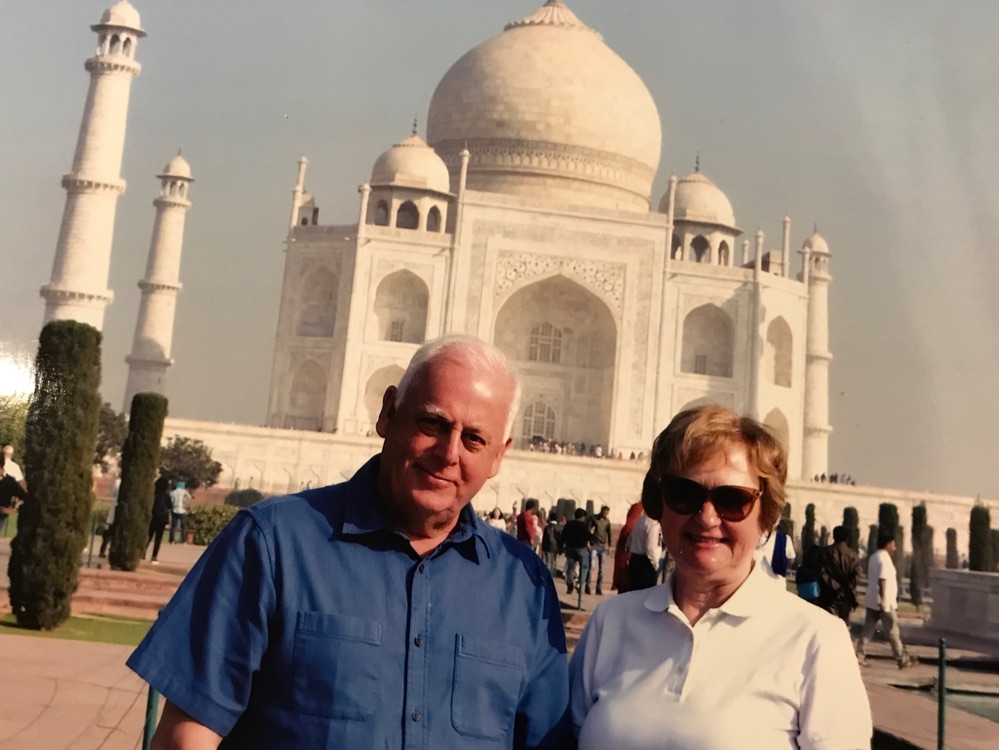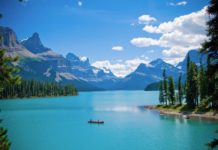Our journey from Delhi to Agra was uneventful, but for our awareness of the poor air quality. The thick white mist sat like a morning fog, obscuring most of the countryside until we were a good distance from the Indian capital.

We saw the smoking chimneys of brick works that were pumping dark smoke into the air.
As we moved along the highway, the mist eventually lifted and we were able to see fields planted with potatoes and other crops but few people at the moment working in the fields.

Entering Agra, where we had come to visit the Taj Mahal, we were immediately confronted by an interesting aspect of Indian life – sacred cows as well as many water buffalos.
The cows were everywhere and seemed to take special delight in sitting right in the middle of the street, amid heavy, impatient, perpetually honking traffic.

All of the vehicles manoeuvred carefully around the cows. Apart from honking, drivers never yelled or cursed the cows, which we were told all belonged to someone and were left to wander freely when they had stopped producing milk.

Why are they regarded as sacred? Apparently, it goes back to times when a mother died in child birth and the cow ended up providing milk for the child and by doing so became the child’s honorary mother and therefore could not be killed or harmed. Well, that’s what we were told.

Add to this picture, rows of dilapidated store fronts, a myriad of bright yellow-topped tuk tuks, horse drawn traps, monkeys on rooftops, sad-eyed donkeys carrying loads of bricks, a disjointed mishmash of seemingly newly cobbled together shanty dwellings and the constant buzz and honking of stopping-then-starting motorbikes and scooters, and you have some idea of the noisy, chaotic, nerve-wracking, colourful, bustling, constantly changing scene that is Agra’s high street at midday.

After lunch, we visited Agra’s famous fort, which was the main residence of emperors of the Mughal dynasty from the 16th century through to 1638.

But we were most interested in seeing the area of the fort where Shah Jahan, the builder of the Taj Mahal, was imprisoned by his son for the last eight years of his life.

The beautifully decorated rooms next to the harem have balconies from where you can see the Taj Mahal in the far distance.

We came to Agra, of course, mainly to see the Taj Mahal up close. Millions have come to do the same before us. We knew we were just the latest in a never-ending parade of tourists coming here to pay homage to one of the world’s great buildings.

Our first view of it was from the backside, from the south side of the river, from the vantage point of what is called the Moonlight Garden where apparently Shah Jahan had plans to build a second Taj, only out of black marble.

We were mesmerized by the beauty of the building from the first moment we saw it, even though it was not the traditional view, and even though we were looking at it from a distance, through the small trees and shrubs of the Moonlight garden.

The sun was setting, a big red sun, and its light was made softer and warmer by being filtered through a thin haze low in the sky. The light made the Taj look even more serene and other-worldly.
We would have been content with this encounter, but we came back the following morning for an even more exciting and satisfying experience.

We entered via the West gate while hundreds of people were lining up for more than a hour at the other main entrance.
The doorway at the main entrance framed the Taj beautifully. Once we passed through this door, we found ourselves in front of the famous water channel that leads directly up to the radiant white, architectural wonder itself.

At this point, I immediately started to think if there was any other building in the world that could compare to the Taj for sheer jaw-dropping beauty.
The Blue Mosque in Istanbul came to mind. St. Paul’s in London. Florence cathedral. St Peter’s. None of them seemed to even come close in terms of the impact of the Taj’s transcendent beauty.

We started to take photographs. It felt like the right thing to do, even though I knew that what I was photographing had been photographed a thousand times before and by infinitely better photographers. But I guess I just wanted to have my own photo of this wonderful sight.

Slowly, we walked up the the building. I noticed that something was lost if I looked at it from a side angle that eliminated one of the towers.
They are an integral part of the composition and balance of the total picture, harmonizing the empty spaces as much as defining the occupied spaces.

Everyone was talking about the beauty and serenity of the symmetry – the fact that each detail is perfectly recreated on the opposite side to produce an exact mirror image.
I had expected the area in front of the building to be crowded and bustling and messy, even littered, and full of people trying to sell trinkets and souvenirs and things.

But it was the opposite. It was peaceful and calm and well landscaped with large, expansive lawns that added a sense of stillness to the space. There were also a few trees to offer some shade.
To enter the Taj, we were asked to put white bags on over our shoes to protect the floor.

The tomb inside, where Shah Jahan and his wife, Mumtaz are buried, is very simply but beautifully decorated. The simplicity of the setting only enhances the tranquility. We quietly filed around the tomb, admiring the inlayed marble with its superb flower ornamentation.
And then it was back outside, into the sunshine, and on to the smooth, spacious marble courtyard.

We left the Taj feeling very happy with our experience. We didn’t come expecting to be so excited or awed by the sight but we were. I can’t help but agree that the Taj Mahal is indeed the world’s most beautiful building and the love story that goes with it only makes it more interesting and memorable.

From Agra, we moved to Bharatpur where, after checking into our “heritage hotel” Laxmi Vilas Palace, which feels likes we are in the Best Exotic Marigold Hotel, we went to the wild bird sanctuary at Keoladeo National Park.
Here, we took rickshaws and were carried deeper into the sanctuary where we were able to see all sorts of exotic migratory and native birds.

The peaceful setting was beautiful and and the woods next to the wetlands were home to deer as well as cows from the neighbouring village.
Overall, we were surprisingly engaged by what we saw despite not being bird experts.

Everywhere, we saw dedicated birders, with expensive cameras and huge telephoto lenses, patiently sitting and waiting for the perfect shot of some exotic or rarely seen specimen.
Our rickshaw drivers were friendly and knowledgeable and continually pointed out special birds and gave us key information about them.
We came away feeling that we had learned a great deal more than we knew when we went in.
swhysall@hotmail.com




















I am really enjoying following along on this journey – wonderful photos and text. Looking forward to your next instalment.
Comments are closed.